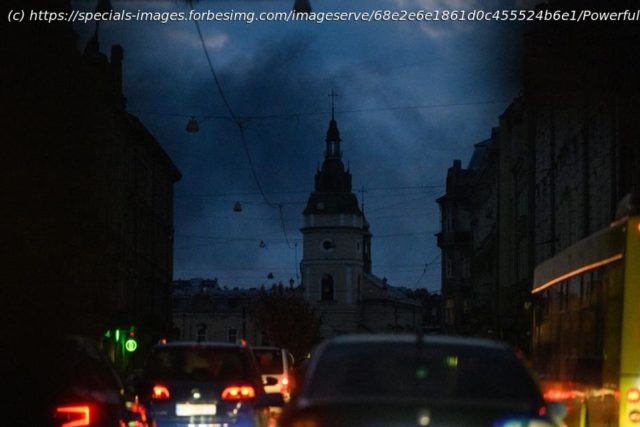In striking Lviv, Russia revives an old tyranny, the Soviet war on faith, attacking the heart of Ukrainian Catholicism and the broader Christian identity of the nation.
At dawn on October 5, Russian fighter jets launched a wave of Kinzhal aeroballistic missiles toward western Ukraine. Explosions shook Lviv, the country’s most Catholic city, as more than a hundred drones and missiles struck targets from Kyiv to the Polish border.
The BBC reported that among the victims were four members of one family, including a 15-year-old girl, killed when a missile struck their home in the village of Lapaivka, near Lviv. President Volodymyr Zelensky condemned the attack as another act of “aerial terror,” urging Ukraine’s allies to accelerate deliveries of air defense systems.
Following the strike, Sergey Radchenko, a professor at Johns Hopkins University’s School of Advanced International Studies, wrote on X: “The message to Ukraine is clear: ‘Submit to the Czar, or this will continue indefinitely.’”
A Symbolic Strike on Ukraine’s Catholic Heart
According to Benjamin Maracek, a social studies teacher and volunteer English instructor at Balakun, these rotational strikes are part of Russia’s evolving campaign to cripple Ukraine’s defense industry. “These rotational strikes are Russia’s attempts to hit regional energy infrastructure and what they believe are Ukraine’s defense production or storage centers,” says Maracek. “They hit Sparrow Industrial Park for the same reason they hit Retro Mall in Kyiv or Epicenter in Kharkiv – huge warehouses that Russia believes to be Ukraine’s defense industrial complex.»
Maracek emphasized that the choice of Lviv is not only strategic but symbolic. He said U.S. politicians such as Vice President JD Vance, a Catholic, should pay attention to the plight of Lviv, Ukraine’s most Catholic city. Vance converted to Catholicism in 2019 and was baptized at Cincinnati’s St. Gertrude Priory by a Dominican friar; he has credited Dominican priests with helping guide his faith journey.
“The Dominican order first arrived in Lviv in the 13th century and had a strong presence until Stalin’s persecution after World War II. The KGB-led Moscow Patriarchate still views the Greek Catholic Church as Western influence – it’s the same mindset that led Stalin to abolish the Church at the Lviv Sobor in 1946,” Maracek said.
Alexander Motyl, a political science professor at Rutgers University, notes that Lviv’s identity has long embodied defiance to Russian domination. “Lviv is also a symbol of Ukrainian nationalism, resistance, and ultimately of Bandera,” Motyl said. “Russia first banned the Uniate Church in the 1830s or 1840s, and then again in 1948 or 1949. The Uniates were beholden to the Pope, not Russia, and were closely associated with Ukrainian nationalism.”
For journalist JP Lindsley, Russia’s recent attack carries an even deeper message. “Such a massive strike on Lviv, just 40 miles from Poland and NATO, is a clear signal to Europe from Russia: ‘This could easily be you,’” says Lindsley. “While trying to cripple Lviv as a supply hub, Russia hopes to scare European nations into keeping weapons for themselves rather than arming Ukraine.”
Lviv, often described as Ukraine’s cultural soul, is also its most actively religious city, where, as Lindsley noted, “on a Sunday morning, even during an air raid, churches are packed, and priests chant the creed in Latin as the walls shake.” He continued, “This is what the media have missed – Lviv is not Orthodox, but Greek Catholic, in union with the Pope but eastern in ritual. Every virtue conservatives say the West has lost – faith, family, community – thrives here.”
Maracek added that Russia’s hostility toward Ukraine’s diverse Christian communities reveals a broader pattern of repression. “Like the torture and execution of Christians in occupied territories, attacks like these demonstrate the intolerance of the Russian state,” he said. “Since 2014, Ukrainian Protestants have also been targeted – churches destroyed, pastors arrested, entire congregations driven underground. Faith is dead in Russia; churches are empty. But in western Ukraine, they are full.






